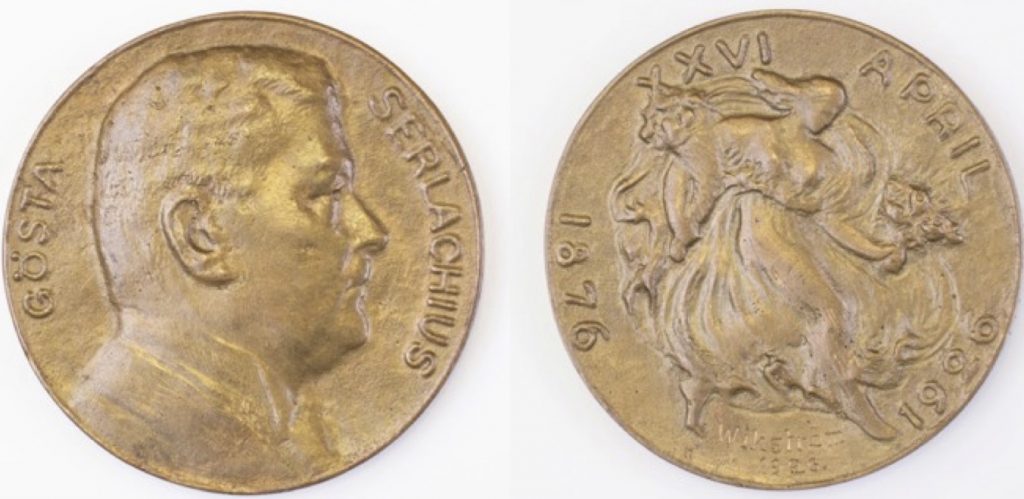A Medal for Gösta Serlachius made by Emil Wikström, 1926
The year 2014 is the 150th anniversary of the birth of Finnish sculptor Emil Wikström (1864–1942), known to his friends as Wiika. As a young artist, Wikström found a sponsor in commercial counsellor G. A. Serlachius, founder of the Mänttä factories. The collaboration between the artist and the Serlachius family continued under the reign of Gösta Serlachius. In his time, two monuments by Wikström were erected in Mänttä, one being the memorial to G. A. Serlachius by Koskelanlampi pond, and the other a tomb for the Serlachius family in Mänttä cemetery.
The Gösta Serlachius Fine Arts Foundation was founded in 1933, and Emil Wikström – sculptor and professor – acted as its vice president and art specialist from the beginning until his death in 1942. For Wikström, Gösta Serlachius was first and foremost a patron of the fine arts, and this is also evident from the personal medal designed for Serlachius by Wikström.
This cast bronze medal – apparently the only one made with this mould – was Wikström’s present to Serlachius on his 50th birthday on 26 April 1926.
As objects of art, medals are closely associated with sculptures and coins. While traditional medals are often round like coins, they do not, however, have the same trade-in value. They are simply mementoes.
A medal always has two sides. The front of the Serlachius medal (the obverse) boasts a profile of Gösta Serlachius looking left, with his name in capital letters.
The reverse side displays the year in Roman numbers, XXVI, and the Swedish word APRIL in capital letters, referring not only to Serlachius’ month of birth but also to springtime. It also features Serlachius’ year of birth and the year of his 50th anniversary in Arabic numbers, 1876 and 1926.
The maiden on the reverse, with a spring in her step and her flowing skirts, is an allegoric reference to Serlachius’ character. She is a symbol of spring, perhaps also a muse of fine arts, carrying a cornucopia to represent wealth and abundance in one hand, and a bouquet to symbolise spring and beauty in the other.
Two engravings have been added to the medal after patination: the name of the artist and the year of the completion of the medal at the bottom of the reverse side, and a reference to the relationship of the artist and his patron on the obverse side, saying Till min vän Gösta Serlachius från Wiika – ‘To my friend Gösta Serlachius from Wiika’.
Marjo-Riitta Simpanen
Curator and art historian


